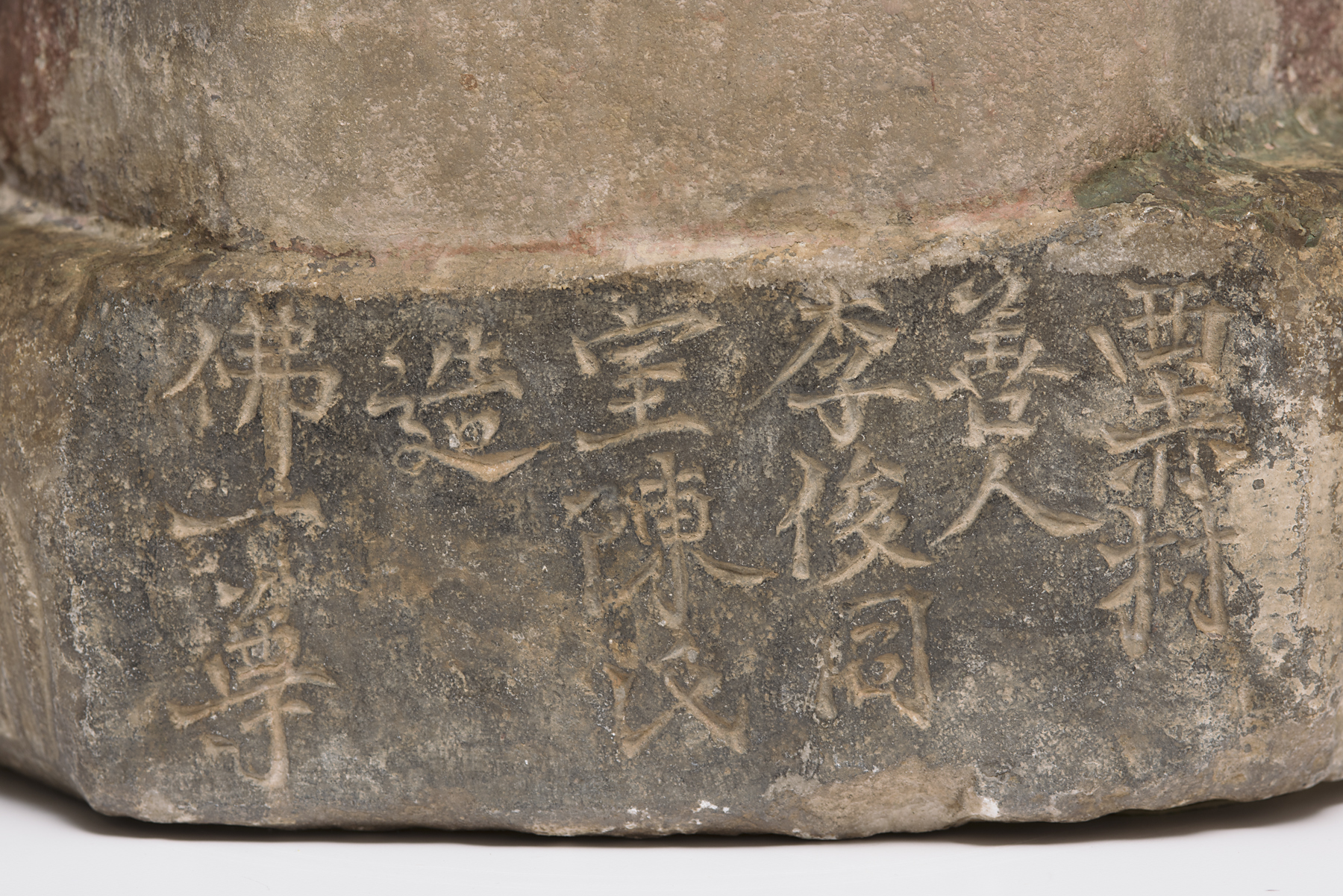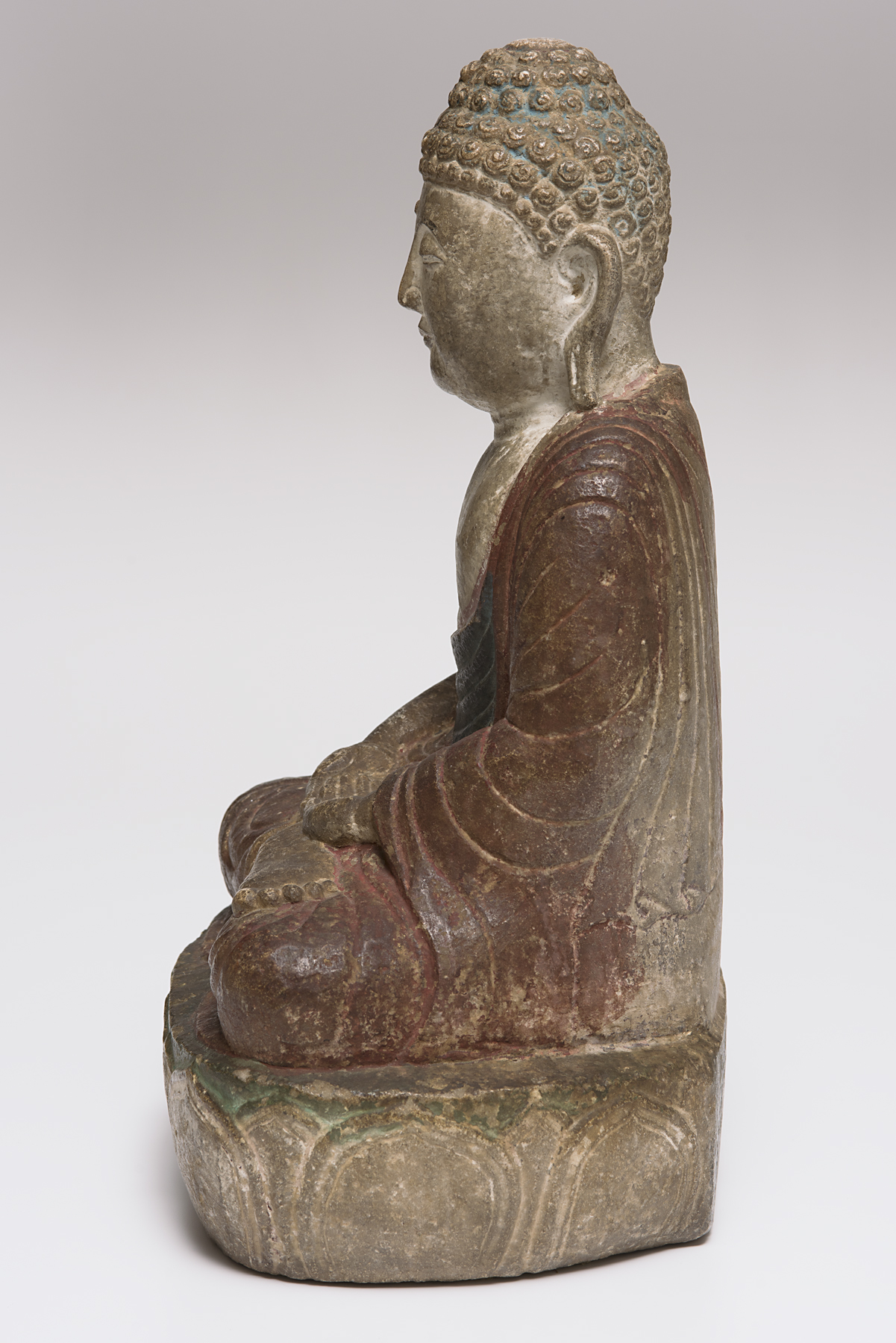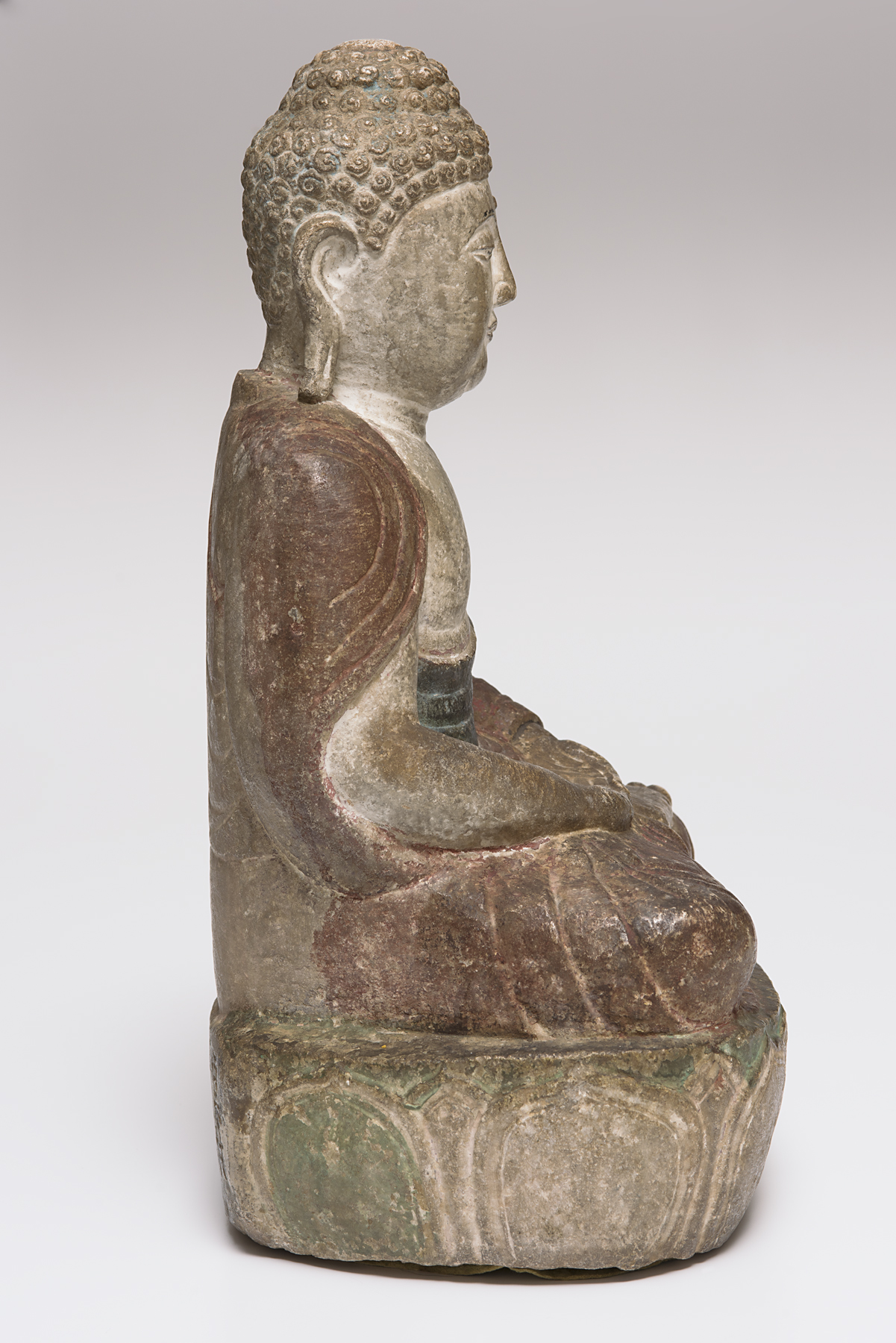Buddha seated on lotus base, unknown maker from China
Artwork Overview
Buddha seated on lotus base
, 900–1100, Tang dynasty (618 CE–907 CE)
Where object was made: China
Material/technique: pigment; carving; stone
Credit line: Gift from the estates of Eliot S. and Marcia Berkley
Accession number: 2015.0137
Not on display
If you wish to reproduce this image, please submit an image request







